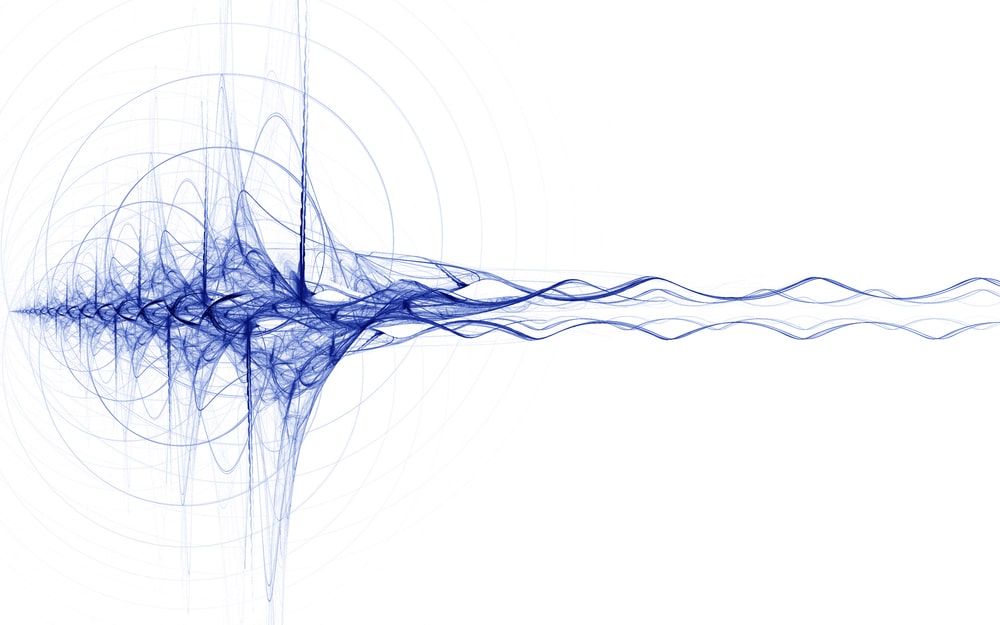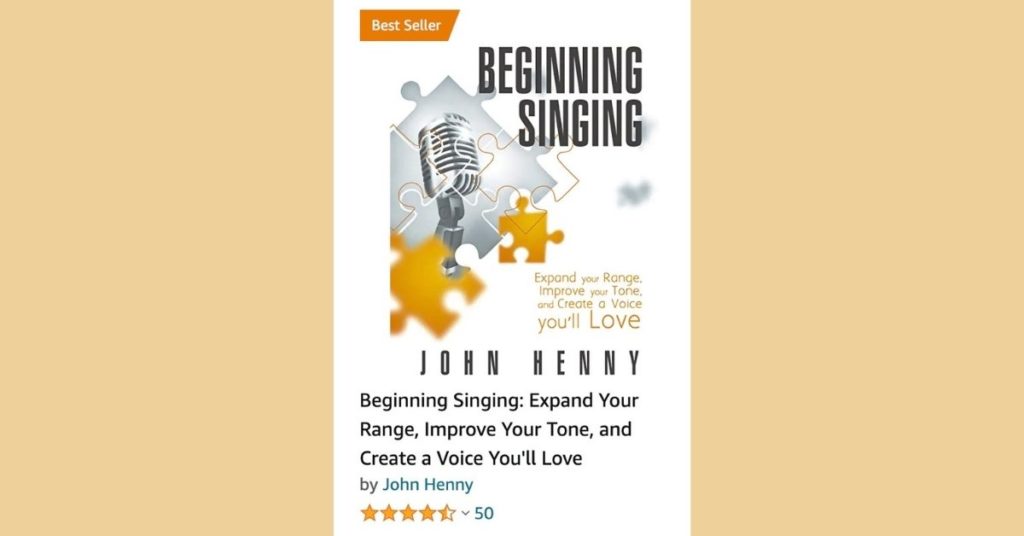One of the significant challenges of singing is that it is sensation-based, especially vocal resonance. These sensations in the human voice can be tricky as they are not easy for everyone to feel and often don't present themselves until you are singing correctly.

Vocal resonance is the singing equivalent of "the chicken or the egg." You need to coordinate singing muscles and vowel shapes to feel it, but you also need to feel vocal resonance to help coordinate the vowels and the action of muscles.
Singing with resonance can be tricky to understand, but take a deep breath. This practical guide and exercises have been proven helpful for singers as well as vocal coaches who study at my Contemporary Voice Teacher Academy.
In this article, we will break down:
- what singing resonance is
- why vocal resonance is important
- simple exercises to increase awareness of your resonators, sympathetic vibrations, and tone quality
What Is Resonance in Singing?
Resonance - you've likely heard the term many times and how it's so important for singing....but what is it?
Resonance happens when a sound wave reflects off a surface - a wall, the inside of a flute, the body of a violin, or, for the singer, the throat, mouth, and (to a lesser extent) nasal cavity.
Think of yelling or clapping in a tunnel or empty school gymnasium. The echo effect is a demonstration of a kind of resonance. The acoustic resonances, or vibrating air molecules created by your clapping hands, travel through space and bounce off the reflective surfaces of the walls, and are enhanced, becoming louder and longer-lasting. This is what the singer must do.
The vocal fold (or vocal cord) has a layer of soft gelatinous-like mucosal tissue on the surface, and this slippery layer is what helps the vocal cords vibrate properly. (This is why hydration is so important for singers to keep this layer working optimally.) When we have a flow of air (breath support) through our two vocal folds or vocal cords, and when they come together and vibrate, they create a buzzing sound, much like a trumpet player's lips
The buzzing, vibrating vocal cords need some help; it is far from sounding like a normal voice, either singing or speaking. This is where our vocal tract resonators come in to boost resonant frequencies.
Why Vocal Resonance Is Important

Our reflective resonance chamber is the vocal tract, a tube comprised of the throat, mouth (oral cavity), soft palate area, and, to a lesser extent, the nasal cavity. The space of the vocal tract takes the small, buzzy sounds created by the vocal cords and amplifies (or resonates) them into what we recognize as the human voice. Each individual vocal tract shape will help to give us our own unique voice.
We also get a portion of the sound waves traveling behind our soft palate and into the nasal cavity, but it should have a minimal effect on the final sound. However, if too much sound energy goes to the nasal cavity or nasal passages, the timbre or tonal quality will be adversely affected, creating a thin "nasal resonance" sound.
We can find similarities in a musical instrument like the trumpet.
The tubular shape of the trumpet acts like our vocal tract, taking the primary vibration from the player's lips and resonating and enhancing them to create its signature sound.
A stringed instrument like the guitar does the same thing but uses the vibration of the plucked string along with the body of the guitar (the resonance cavity) to create its beauty of tone.
If the trumpet was accidentally bent or the guitar body was damaged, the resonance structures would be affected. As a result, these instruments would no longer sound the same, even if we used the same buzzing lips or vibrating strings.
The size and shape of the resonance chamber are critical for pleasing timbre and tone quality.
We need to control and properly adjust the shape of the vocal tract to have an effective resonator. Singers primarily use sound and sensations to guide them in this effort. Balanced resonance will create sympathetic vibrations and give us a range of accompanying sensations.
Understanding these sensations allows us to control the vocal resonators to create more power with strong resonance, better balance, improved tone, extended range, and more stability. How great is that?!
Sensations of Vibration

There are resonance sensations that tend to be similar for most singers. However, if you do not feel these sensations in the same way, that's fine. Remember, you are unique, and you may have a different way of explaining and processing the experience of vocal tract resonances.
Note: These descriptions are what the singing voice may FEEL like and are not descriptions of what is truly happening.
Popular singing terms you may have heard from a voice teacher are "chest voice" and "head voice." These are terms of "sensation" used to describe the singing voice rather than what is truly occurring. These feelings or sensations of the vibrations are what are referred to as "sympathetic resonance" or "sympathetic vibrations."
The singing resonance type is where more significant amounts of vibration or vocal tone occur. For example, in chest voice, there is more vibration or amplification of the voice happening in the throat. In head voice, this amplification switches to the mouth area. Both the throat and mouth areas are each considered a resonance chamber.
Singing Resonance Pathway

When our voice generates musical tone (conductive resonance) and singing through our vocal range, as we switch from the throat resonator to the mouth resonator, many singers describe sensations of vocal resonance and sound vibrations traveling behind the soft palate up behind the eyes. There is often a more nasal sensation as you ascend as well. You may have heard the term "mask resonance" when describing this sensation.
The sympathetic vibration or sympathetic resonance can feel very real to the singer; it is like a pathway going from low to high notes.
We want to strengthen our awareness of this pathway and these types of resonance characteristics to track and enhance resonance during singing to help ensure vocal balance and improve our power and qualities of tone and our vocal sound. With focused exercise and by studying your vowel shapes, you will begin to understand and ultimately feel qualities of resonant tone developing.
Singing Resonance Exercises

Here are some simple vocal resonance exercises taken from my book Beginning Singing that I also use regularly in my vocal studio to help you experience the proper shifts in singing resonance.
Practice each exercise, and listen closely, as this will help you experience the tones, sounds, and sensations that are true voice resonance.
Humming Exercises
- In this simple exercise for both male and female voices, first, close your mouth and bring your teeth gently together.
- Give an enthusiastic "mmmm hmmm" like you agree with someone.
- Where do you feel the vibrations of your voice? While you will likely feel vibrations in your throat from the buzzing vocal folds, you may feel even more sensations in your mouth and other areas of your head. This is because resonance energy is more powerful than the initial buzzing of the vocal folds (at least in good singing, it is). Your resonators increase the intensity of the sound waves, resulting in more feedback to the nervous system.
- Now stretch it out a bit longer and focus on the sensations: "mmmm hmmm." Hold the "mmmm" and slowly glide up to a higher pitch, then glide back down. Repeat the exercise to listen and feel the sensations.
- What did the sensations do? Do the glide again and pay attention to the direction of the resonance. You will likely feel it go up higher in your head and then back down as the pitch goes higher and lower.
The upper register is commonly called "head voice" because of where singers feel these sensations, or you may also hear it referred to "head tone" or "head resonance" when describing the feeling of this sympathetic vibration.
Many singers experience the higher pitches as feeling behind their nose or even behind their eyes. The highest pitches can feel as if they are coming from the top of your head. Of course, the sound is doing no such thing, but these sensations are very real to us singers. This is because of changes in the vibration of higher pitches and how our body senses the absorption of energy and tone production.
- Now, glide your hum down to your lowest pitch, paying attention to where you feel the vibrations in the lowest resonance.
- Did you feel the vibrations drop into your chest or upper chest? The lower register is often called "chest voice" because of these chest resonance sensations.
Vowel Exercises
In this vocal exercise, let's map the sensations as we move from one vowel sound to another.
- Start by taking a deep breath and then hold a long OO vowel (as in BLUE).
- Now go from OO to EE (as in WE). Do this slowly: OOOOOOO EEEEEEEE Do the sensations change? How about the color of the vowel sounds? When singing these different vowel shapes, is one brighter and the other a bit darker?
- Do this again and pay particular attention to your tongue: OOOOOOO EEEEEEEE Do you feel your tongue move forward? Notice how the tongue action movement creates changes in tone, color, and sensation when making these shapes.
- Now go from OO to AH (as in CAT): OOOOOOO AAAAAAAAAH - You will notice in this exercise, the lips are moving instead of the tongue. What changes do you notice in sensation and color (bright vs. dark)? Like the previous exercises, each small vowel adjustment changed the sound and tone.
As you go through each vocal exercise, by paying attention to and cataloging these sensations of your vocal resonators, you can begin to improve your tone, vocal balance, and vocal range. It takes time to build muscle memory and connect all the dots, so stick with it as regular practice will start to develop conscious control, and natural resonant sound will develop before you know it.
When practicing vocal exercises and as you go through each exercise or even when singing through pitch range in a song, ask yourself, "what type of sympathetic vibration and quality of tone are you feeling?"
- "Am I feeling head vibrations or mask resonance?"
- "Am I feeling chest tones or upper chest sensations?"
- "Am I feeling vibrations in the soft palate area or closer to the front of the mouth and lips?"
- "Am I feeling vibrations through the nasal cavity or towards the top of my head"
- "When changing vowels and mouth shape, how does that affect the oral sound and resonant sound?"
In Conclusion
By practicing these simple daily vocal exercises, you will be building new awareness of your own singing voice.
These sensations of resonance will become guideposts to developing better tone, control, and balance.
If you would like to learn more about my books, courses, and John Henny's VoiceSchool.com, please visit johnhenny.com. And if you are interested in online vocal lessons, you can reach out to our front desk at [email protected], and we would be happy to answer your questions.